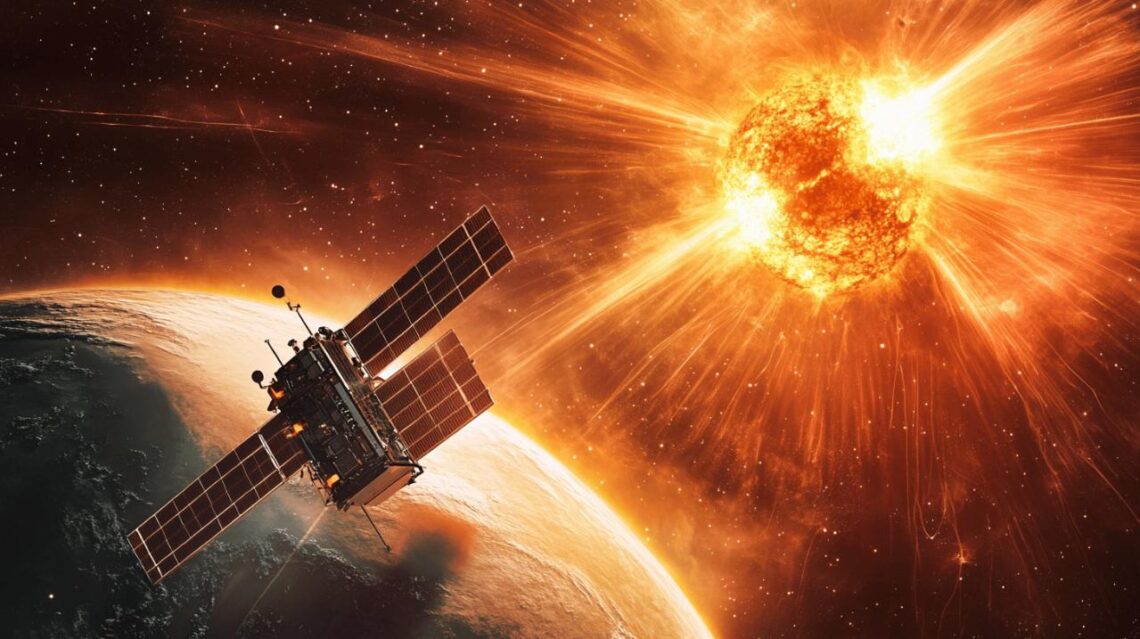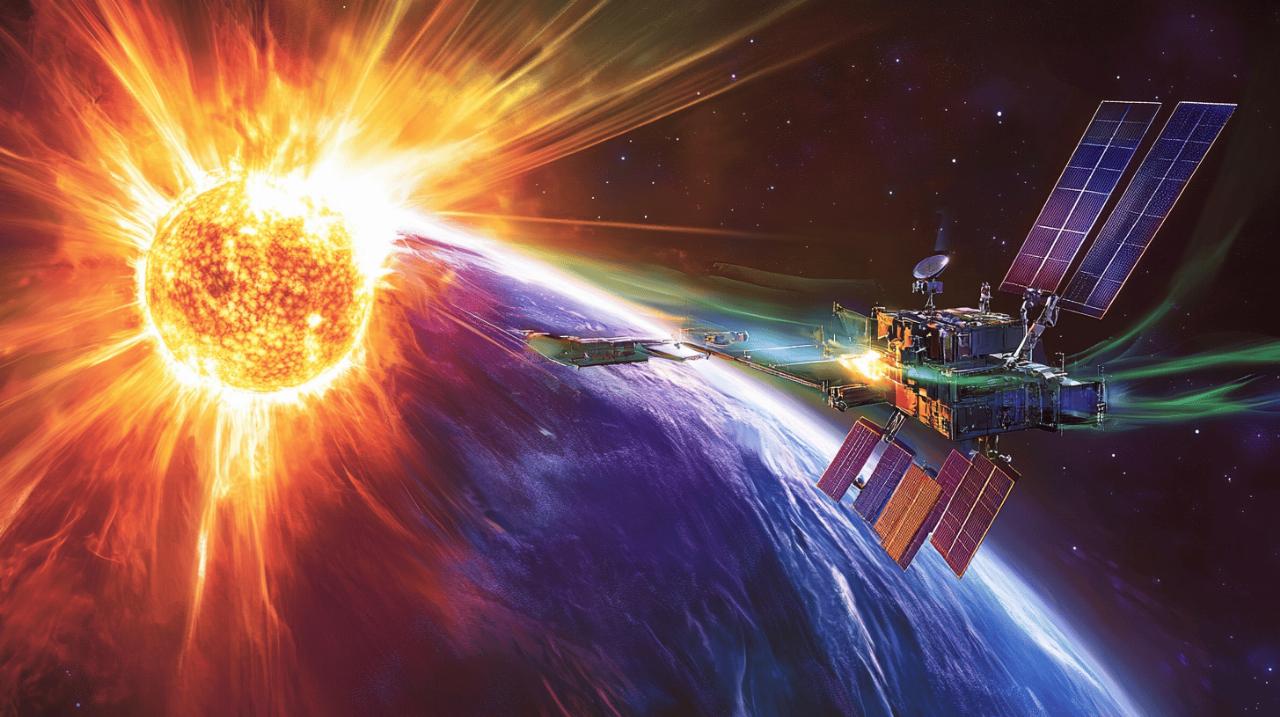
Space Weather All Weather Info: How Geomagnetic Storms Wreak Havoc on Britain’s Power Grids and Mobile Networks
The invisible forces emanating from the Sun may seem distant and abstract, yet they hold profound consequences for modern life here in Britain. Space weather, a term encompassing solar flares, coronal mass ejections, and the geomagnetic storms they trigger, is increasingly recognised as a critical concern for infrastructure operators, scientists, and policymakers alike. When the Sun unleashes its fury, the effects can ripple through our power grids, disrupt mobile networks, and even interfere with navigation systems millions of miles away from the source. Understanding these phenomena is no longer the exclusive domain of astronomers; it is a matter of national resilience and technological security.
Understanding space weather: solar flares and geomagnetic storms explained
What are solar flares and how do they form?
Solar flares are sudden and intense bursts of radiation originating from the Sun's surface, arising when magnetic energy that has accumulated in the solar atmosphere is released abruptly. These eruptions occur in active regions where magnetic field lines become twisted and tangled, eventually snapping and reconnecting in a process that liberates colossal amounts of energy. The resulting flare emits radiation across the electromagnetic spectrum, from radio waves to X-rays and gamma rays, which can reach Earth within minutes. While the Sun's restless nature has always produced such phenomena, the sheer intensity and frequency of solar flares vary with the eleven-year solar cycle, during which solar activity waxes and wanes. When a particularly powerful flare erupts, it can be accompanied by a coronal mass ejection, a massive expulsion of plasma and magnetic field that hurtles through space at speeds exceeding a million miles per hour. This interplay between flares and coronal mass ejections, commonly abbreviated as CMEs, sets the stage for potentially disruptive space weather events that can have tangible impacts on Earth.
The Journey from Sun to Earth: Solar Winds and Geomagnetic Disturbances
Once a coronal mass ejection is launched, it travels through the solar wind, a continuous stream of charged particles flowing outward from the Sun in all directions. When these ejected particles encounter Earth's magnetosphere, the protective magnetic shield surrounding our planet, they compress and distort it, triggering what scientists term a geomagnetic storm. Such storms are characterised by intense fluctuations in the Earth's magnetic field, which in turn induce currents within the ionosphere, the electrically charged layer of the atmosphere extending from roughly eighty to six hundred kilometres above the surface. These ionospheric currents are not confined to the upper atmosphere; they can penetrate deep into the ground, generating geomagnetically induced currents, or GICs, that flow through conductive infrastructure such as pipelines and power lines. The journey from the Sun to the Earth, while spanning approximately one hundred and fifty million kilometres, can be completed in as little as one to three days during a significant solar event, leaving relatively little time for preparation once a coronal mass ejection is detected.
The Impact of Space Weather on Britain's Critical Infrastructure
Power grid vulnerabilities: how geomagnetic storms threaten electricity supply
Britain's electricity networks, like those of other industrialised nations, are particularly susceptible to the effects of geomagnetically induced currents. These currents, arising from rapid changes in the Earth's magnetic field during a geomagnetic storm, flow through the conducting pathways of the power grid, including transmission lines and the massive transformers that regulate voltage across the network. When GICs enter power transformers, they can cause the magnetic cores of these devices to become saturated, leading to overheating, inefficiency, and in severe cases, permanent damage. The consequences of such damage are far-reaching, as replacing a large power transformer is both time-consuming and costly, often requiring months of lead time and specialised manufacturing. History offers a sobering reminder of what can happen when geomagnetic storms strike unprepared infrastructure. In March of nineteen eighty-nine, a severe geomagnetic storm triggered a catastrophic blackout in Québec, Canada, leaving approximately six million people without electricity for around twelve hours. The event was precipitated by a powerful coronal mass ejection that induced massive currents in the power grid, ultimately causing the collapse of the entire system within seconds. While Britain has not experienced a disruption of such magnitude in recent decades, the risk remains ever-present, particularly as the nation's reliance on interconnected and digitally controlled electrical systems continues to grow.
Mobile networks and satellite communications: disruptions during solar events
Beyond the power grid, space weather poses significant challenges to mobile networks and satellite communications, both of which depend heavily on the ionosphere for signal propagation. During a geomagnetic storm, the ionosphere becomes highly disturbed, with fluctuations in electron density leading to signal degradation, delays, and even complete loss of connectivity. Global positioning systems, or GPS, are especially vulnerable, as they rely on precise timing signals transmitted from satellites orbiting above the Earth. When ionospheric conditions are disturbed, these signals can be refracted or scattered, resulting in positioning errors that can range from metres to tens of metres. Such inaccuracies have serious implications not only for navigation but also for industries that depend on GPS timing for synchronisation, including financial markets, power grids, and telecommunications networks. Mobile phone users may experience dropped calls, slower data speeds, or intermittent service during intense solar events, while satellite operators face the risk of hardware damage from increased radiation exposure. The disruption of these systems, even temporarily, can have cascading effects on commerce, emergency services, and daily life, underscoring the need for robust monitoring and mitigation strategies.
Recent Research and Expert Insights on Space Weather Monitoring
Latest Scientific Findings on Solar Activity and Earth's Magnetosphere
 Recent scientific research has deepened our understanding of how solar activity interacts with Earth's magnetic field and atmosphere, shedding light on the complex mechanisms that drive geomagnetic storms. Advances in satellite technology and ground-based observation have enabled scientists to track coronal mass ejections with greater precision, measuring their speed, density, and magnetic orientation as they traverse the space between the Sun and Earth. Studies have shown that the orientation of the magnetic field embedded within a coronal mass ejection plays a crucial role in determining the severity of the resulting geomagnetic storm. When the magnetic field of an incoming CME is aligned opposite to that of Earth's magnetosphere, a process known as magnetic reconnection occurs, allowing solar wind particles to penetrate more deeply and trigger stronger disturbances. Researchers have also made significant strides in understanding how geomagnetically induced currents vary with ground conductivity, geology, and the configuration of power grids. In Britain, the British Geological Survey, or BGS, operates a network of magnetic observatories, including three within the United Kingdom, that continuously measure the Earth's magnetic field and its fluctuations. These observatories provide critical data for modelling GICs in the UK power grids, enabling scientists to forecast geomagnetic activity and assess the potential risks to infrastructure. The integration of real-time data from multiple sources, including satellites, ground observatories, and ionospheric sensors, is enhancing our ability to predict space weather events and issue timely warnings to affected industries.
Recent scientific research has deepened our understanding of how solar activity interacts with Earth's magnetic field and atmosphere, shedding light on the complex mechanisms that drive geomagnetic storms. Advances in satellite technology and ground-based observation have enabled scientists to track coronal mass ejections with greater precision, measuring their speed, density, and magnetic orientation as they traverse the space between the Sun and Earth. Studies have shown that the orientation of the magnetic field embedded within a coronal mass ejection plays a crucial role in determining the severity of the resulting geomagnetic storm. When the magnetic field of an incoming CME is aligned opposite to that of Earth's magnetosphere, a process known as magnetic reconnection occurs, allowing solar wind particles to penetrate more deeply and trigger stronger disturbances. Researchers have also made significant strides in understanding how geomagnetically induced currents vary with ground conductivity, geology, and the configuration of power grids. In Britain, the British Geological Survey, or BGS, operates a network of magnetic observatories, including three within the United Kingdom, that continuously measure the Earth's magnetic field and its fluctuations. These observatories provide critical data for modelling GICs in the UK power grids, enabling scientists to forecast geomagnetic activity and assess the potential risks to infrastructure. The integration of real-time data from multiple sources, including satellites, ground observatories, and ionospheric sensors, is enhancing our ability to predict space weather events and issue timely warnings to affected industries.
What Experts Are Saying: Predictions and Preparedness for Future Events
Experts in the field of space weather are increasingly vocal about the need for enhanced preparedness and investment in resilience measures. The consensus among scientists is that while we cannot prevent solar flares or coronal mass ejections, we can significantly mitigate their impacts through improved forecasting, infrastructure hardening, and public awareness. The British Geological Survey, for instance, offers services that help industries across the spectrum to predict and prepare for space weather events by providing comprehensive monitoring, forecasting, and modelling capabilities. These services are designed to give operators of critical infrastructure, from power companies to telecommunications providers, the information they need to take pre-emptive action, such as adjusting grid configurations, postponing maintenance activities, or implementing contingency plans. Some experts have called for the development of international standards for space weather resilience, arguing that the interconnected nature of modern technology demands a coordinated global response. Others emphasise the importance of redundancy and backup systems, particularly for industries where even brief disruptions can have severe consequences. As solar activity is expected to increase in the coming years, with the current solar cycle peaking around the mid-2020s, the urgency of these preparations is becoming more pronounced. The scientific community continues to refine predictive models, aiming to extend the lead time for warnings from hours to days, thereby affording operators greater opportunity to safeguard their systems.
Broader Implications: Space Weather's Influence on Climate and Technology
The connection between space weather and earth's climate patterns
While the primary focus of space weather research has centred on its immediate technological impacts, there is growing interest in understanding its potential influence on Earth's climate patterns. The mechanisms by which space weather might affect climate are complex and multifaceted, involving changes in atmospheric chemistry, cloud formation, and radiation balance. Solar flares and coronal mass ejections increase the influx of high-energy particles into the upper atmosphere, where they can ionise gases and alter the chemistry of the stratosphere and mesosphere. Some researchers have proposed that these changes could influence cloud nucleation processes, potentially affecting albedo and surface temperatures. However, the extent and significance of these effects remain subjects of ongoing investigation and debate within the scientific community. It is important to note that space weather operates on timescales far shorter than those associated with long-term climate trends, and there is currently no evidence to suggest that solar variability is a primary driver of contemporary climate change. Nonetheless, understanding the full range of interactions between solar activity and Earth's environment is crucial for developing a comprehensive picture of the forces shaping our planet's climate system. As climate science continues to evolve, interdisciplinary collaboration between space physicists, atmospheric scientists, and climatologists will be essential for unravelling these intricate connections.
Protecting our digital age: strategies for mitigating space weather risks
In an era defined by digital connectivity and reliance on complex technological systems, protecting infrastructure from space weather risks has become a priority for governments, industry, and researchers alike. Strategies for mitigation encompass a wide range of approaches, from engineering solutions to policy frameworks and public education. On the technical side, power grid operators are exploring the use of devices such as neutral blocking capacitors, which can prevent geomagnetically induced currents from flowing through transformers, thereby reducing the risk of damage. Similarly, satellite designers are incorporating radiation-hardened components and improved shielding to protect sensitive electronics from the harsh environment of space. Forecasting and early warning systems play a pivotal role in mitigation efforts, enabling operators to take proactive measures before a storm arrives. In the United Kingdom, the work of organisations like the British Geological Survey exemplifies how scientific expertise can be translated into practical tools for industry and government. By modelling the behaviour of geomagnetically induced currents in real time and issuing forecasts of geomagnetic activity, these organisations empower decision-makers to respond swiftly and effectively. Public awareness is another critical component, as understanding the risks and potential impacts of space weather can help individuals and communities prepare for disruptions. Educational campaigns, media coverage, and collaboration between scientists and communicators are all essential for building a culture of resilience. Looking ahead, international cooperation will be vital, as space weather respects no borders and its effects can cascade across continents. Initiatives to share data, harmonise standards, and coordinate responses are already underway, reflecting a growing recognition that protecting the digital age requires a collective and sustained effort. As we continue to advance technologically, the lessons learned from past events and the insights gained from ongoing research will serve as the foundation for a safer and more resilient future.





